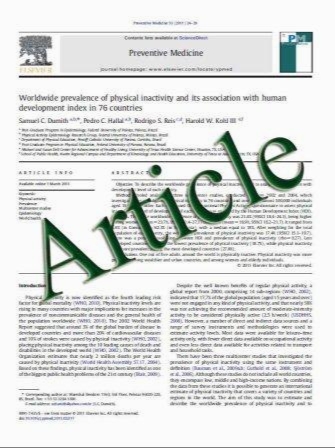Doubling of serum creatinine: is it appropriate as the endpoint for CKD? Proposal of a new surrogate endpoint based on the reciprocal of serum creatinine
- نوع فایل : کتاب
- زبان : انگلیسی
- مؤلف : Noriko Takeuchi Emi Takenoshita Fumino Kato Tomoko Terajima Makoto Ogawa Satoshi Suzuki Takayuki Fujii Eriko Kobayashi Tomoya Sakurada
- چاپ و سال / کشور: 2011
Description
Background The evaluation of the progression of renal insufficiency, or decline in glomerular filtration rate (GFR), has been approached more simply and precisely by converting measured serum creatinine value into the reciprocal of serum creatinine, estimated GFR, or other parameters. Doubling of serum creatinine (simple doubling) is conveniently used as a surrogate endpoint for progression of renal disease but is thought to be biased unfairly by the initial value of serum creatinine (ScrInt).Weproposed the definite decline in the reciprocal of serum creatinine (2–4 doubling) as a surrogate endpoint, comparing simple doubling with this new endpoint to verify the effect of ScrInt on the endpoint. Methods For the purpose of comparison between endpoints, 194 patients in a historical cohort of chronic glomerulonephritis were investigated. Kaplan–Meier survival analysis was performed with the composite endpoint of need for dialysis and either simple doubling or 2–4 doubling. Then, the distribution of ScrInt was compared between total patients and patients developing each endpoint. Results The endpoint value of serum creatinine (ScrEnd) with 2–4 doubling was lower than that with simple doubling at ScrInt\2.00 mg/dl, and the difference of ScrEnd between simple doubling and 2–4 doubling was larger, as ScrInt became lower. In patients reaching simple doubling, ScrInt was higher than that of the total patients (1.66 vs. 1.07 mg/dl in median, respectively; p\0.001). In patients reaching 2–4 doubling, there was no significant difference in ScrInt. Conclusion Patients with low serum creatinine concentration at baseline had a tendency of prolonged development into simple doubling. In contrast, with 2–4 doubling, there was no bias of ScrInt.
Clin Exp Nephrol (2011) 15:100–107 Received: 26 November 2009 / Accepted: 6 October 2010 / Published online: 9 November 2010 Japanese Society of Nephrology 2010


